I am using both L293D and L298N for controlling the stepper motor NEMA17. It rotates and stop as expected. I am not sure about the usage of Enabling provided by the L293D bridge. In this attached file 
the pin 1 and 9 are used to enable. I am currently setting high on both these pin always and the motor rotates. I thought that enabling the pins can be controlled dynamically. For example, can I set low on pin 1, when I am not using the Input 1 and 2? I though this way the pins are not always enabled and reduce the heat in the H-Bridge. Please let me know if that works.